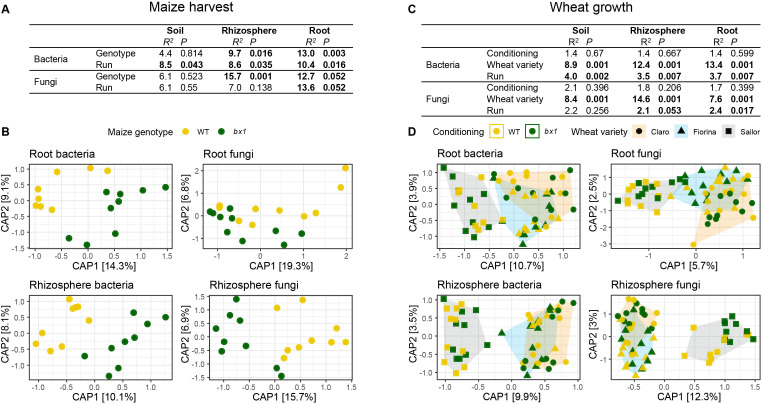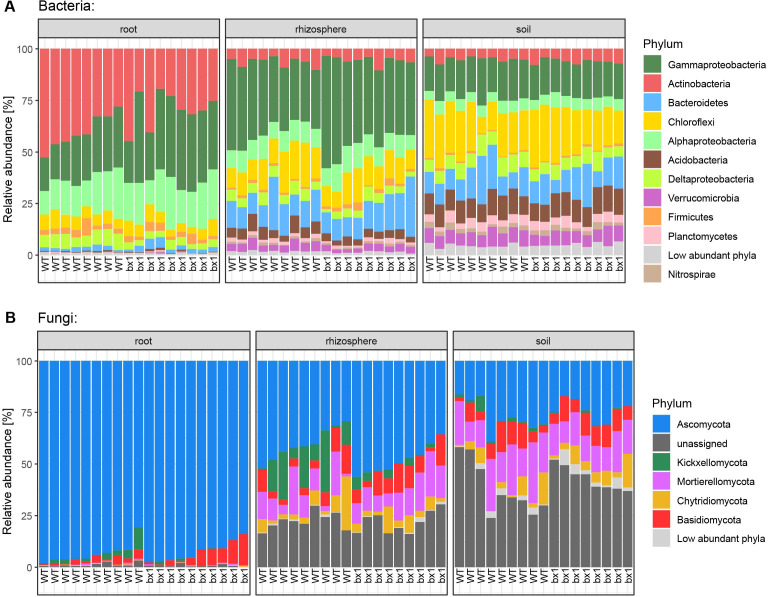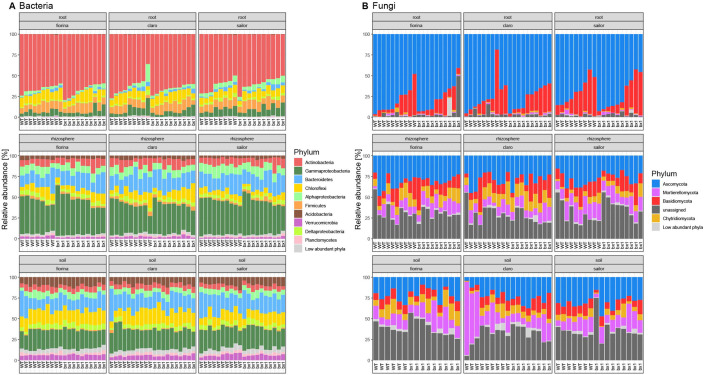Figure 2. Benzoxazinoid soil conditioning transiently structures rhizosphere microbial communities.
Soil, rhizosphere, and root-associated microbial communities at maize harvest (A, B) and during wheat growth (C, D). (A) Output of PERMANOVA on Bray-Curtis dissimilarities of bacteria and fungi showing R2 and p values for genotype and sequencing run effects in soil, rhizosphere, and root compartments. Significant effects are indicated in bold. (B) Constrained Analysis of Principal Coordinates (CAP) confirming the genotype effects found in the PERMANOVA, axis labels denote percentage of explained variance (n=8–10). (C, D) Same as in (A, B) but also including the factor wheat variety (n=6–10).



